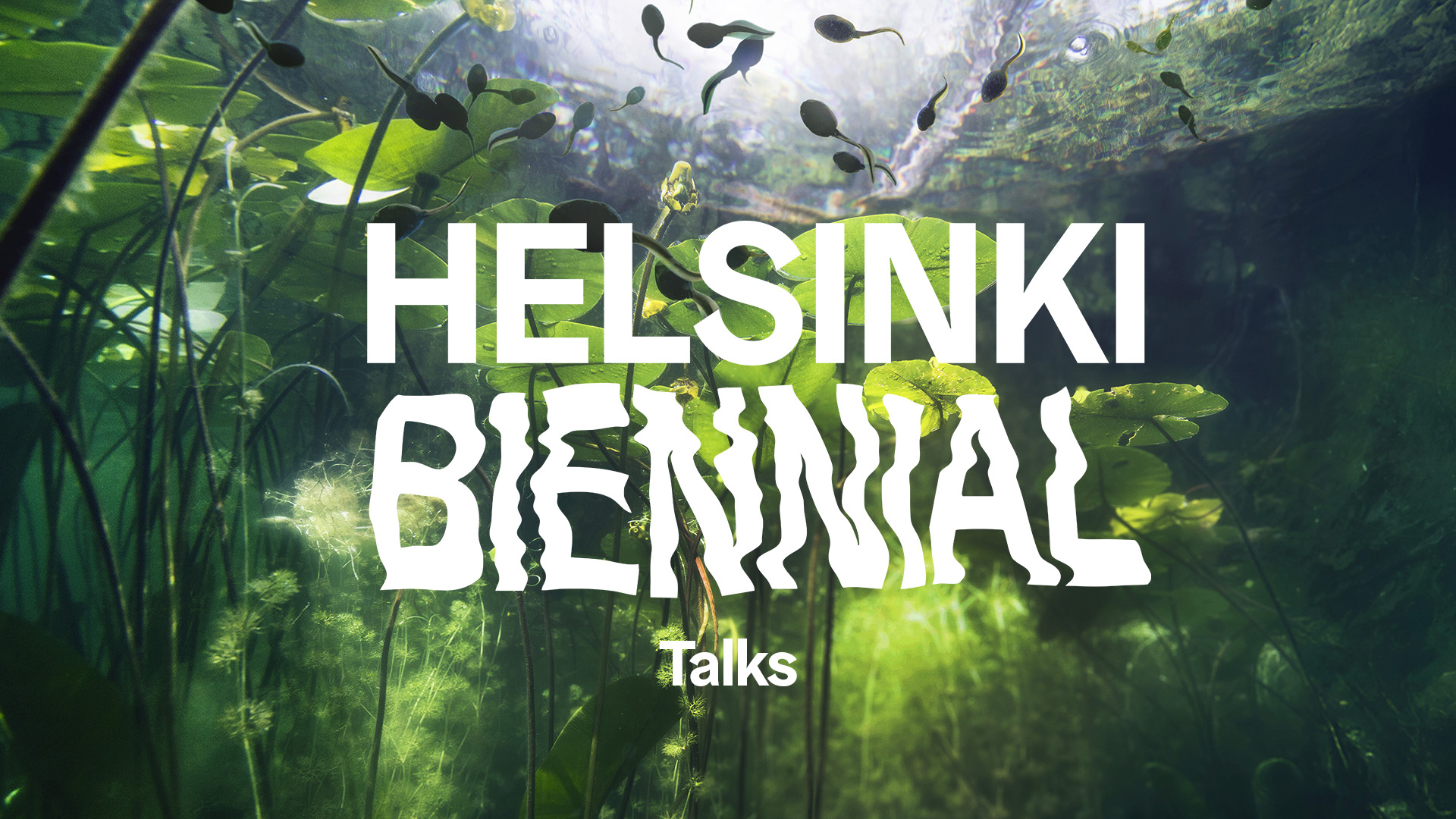Keskustelutilaisuus: Taide ekologisen muutoksen edistäjänä
20.9 klo 13:00 — Sokos Hotel Pier 4, Itämeri-huone (Katajanokanlaituri 4)
Tapahtuma toteutetaan Helsinki Biennaalin ja Suomen Taideyhdistyksen yhteistyönä. Keskustelut käydään englanniksi.
Voit osallistua tapahtumaan joko paikan päällä tai verkossa.
Livestriimiä voit seurata täällä.
Schedule:
13:00 Opening of the event
Arja Miller, Director of HAM Helsinki Art Museum and Helsinki Biennial
13:10 Introduction
Tapio Mäkelä, acting director, Finnish Art Society
13:15 Panel discussion with Helsinki Biennial artists
Kati Roover, nabbteeri, Kalle Hamm, Kristiina Koskentola and Paul Rosero Contreras; moderated by Eero Karjalainen, Finnish Art Society
14:15 Coffee break
14:30 Keynote
Steven Kurtz, Critical Art Ensemble
Impossible Problems and Possible Solutions: Strengthening the Power of Art to Confront Environmental and Ecological Crises
15:40 Round table: Great Expectations
Hege Tapio, Navigating the Gap: Between Great Expectations and Embodied Practice
Tapio Mäkelä, Doors of Ecological Perception
Kati Kivinen, A Biennial Exhibition as a Tool for Ecological Empowerment
Steven Kurtz, discussant
16:40 Closing discussion
17:00 Event ends
***
Further information on the talks:
Keynote: Steven Kurtz, Critical Art Ensemble
Steven Kurtz of Critical Art Ensemble gives a keynote talk: ”Impossible Problems and Possible Solutions: Strengthening the Power of Art to Confront Environmental and Ecological Crises”. In this lecture, he will outline a series of problems that have perplexed those who have attempted, through cultural means, to create change that will contribute to reversing negative human earthly interventions. According to Kurtz, ”key to these problems will be the issue of necropolitics and its association with poetics and aesthetics, diversity and anthropocentrism, nature as hyperobject, and the expectation of alienation-free artistic power greater than what can be produced by an individual alone.”
In a time when one crises after another either surrounds or invades our bodies, Steven Kurtz is able to see paths forward and suggest next steps to take. His thinking is informed by decades of practice as an artist, writer and teacher of bioart, blending with layers of philosophy and history. Yet he calls for epistemological anarchy, always questioning one’s own premises to see the confines of the bubbles that we inhabit – so that dialogue and change is possible.
Artist panel
Five artists of this year’s Biennial, Kati Roover, nabbteeri, Kristiina Koskentola, Kalle Hamm and Paul Rosero Contreras join in dialogue in a panel moderated by Eero Karjalainen. Has the Vallisaari island changed with their work, or vice and versa? How do they as artists perceive of art’s capacity to have an ecological impact? Is the question relevant, or should it be asked differently?
Round table: Great Expectations
Not all art is activist, while some may be. Not all art addressing ecology is bioart, yet some certainly is. What we are witnessing are complex ecologies, and multitudes of artistic practices that address them. So we may ask, if art is an agent of ecological change, what is it altering or shifting? Hege Tapio, Tapio Mäkelä and Kati Kivinen present, Steven Kurtz as a discussant.
Hege Tapio is a Norwegian artist, curator, and researcher working at the intersection of art, technology, and biological speculation. Her practice probes how humans, machines, and metabolic systems are entangled in care, control, and commodification. In the panel, she discusses the position artistic practice takes when navigating transdisciplinary approach, and the possibilities as well as challenges that this positioning entails. ”I think this angle can open up to talk about the ways art – not just inspire our thinking for new imaginaries, or processing anthropocentric grief, – but also position art and practice as a place to expand our critical reflections and vocabulary, and for responding to the cultural imaginaries embedded in our society.”
Tapio Mäkelä is a Finnish curator, researcher, artist and producer, currently acting director of the Finnish Art society. In his presentation, Doors of Ecological Perception, Mäkelä discusses how art and critical practice play a role in constructing conceptual machines, apparatuses of translation and transposition, various sensory extensions that introduce otherwise distant or too complex ecological processes to the realm of the perceivable. If the artist opens a door of ecological perception, the agency of change is redistributed into the hands of the observer-participant.
Kati Kivinen is art historian and curator based in Helsinki, currently working as Head of Exhibitions at the HAM Helsinki Art Museum (2022-) and Head Curator for the Helsinki Biennial 2025: Shelter with Blanca de la Torre. In her curatorial practice she critically explores social and cultural phenomena of the present as well as of the possible future/s. Recently, a special focus of her work has been directed towards critical ecologies and the Anthropocene’s new aesthetic sensibilities with projects at the intersection of contemporary art, ecology, and science.
In the panel, she discusses the biennial exhibition as a tool for ecological empowerment. ”As curators of the 3rd Helsinki Biennial, we believe that the urgency of the ecological crisis should not lead us down a path of despair. Rather, it calls for a paradigm shift towards climate optimism and empowerment. … By understanding artistic practices as innovative cognitive processes and speculative methodologies, we can outline a transformative roadmap for addressing the socio-climate crisis through imaginative, motivational, and inclusive narratives.”
